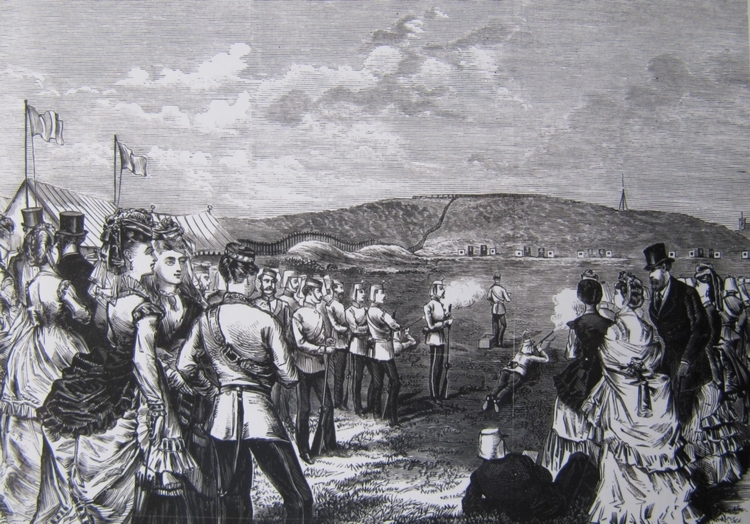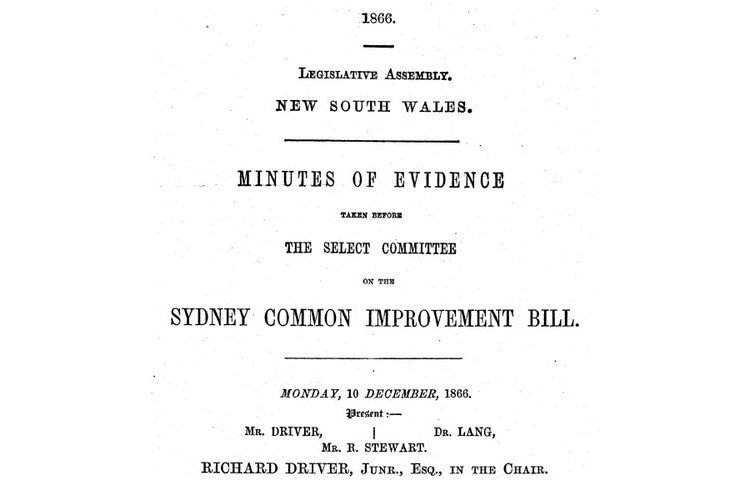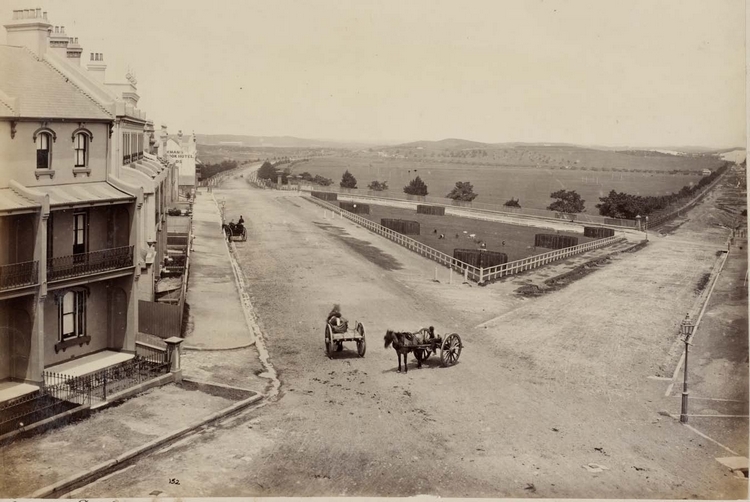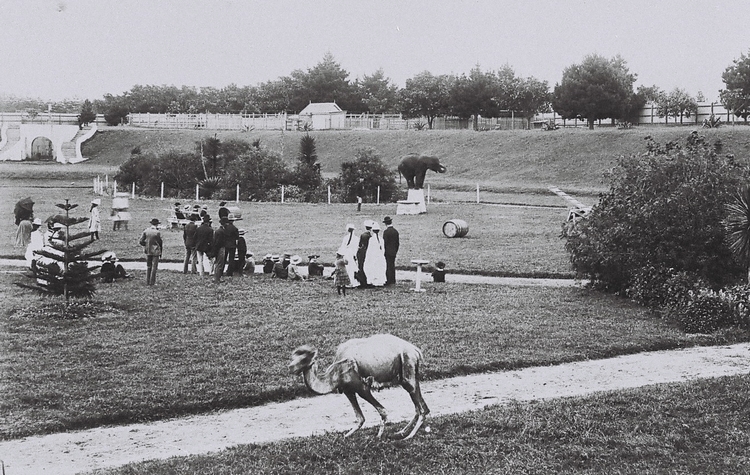Moore Park in Sydney is known affectionately as the 'green lungs of the city'. But this description tells only part of the story - a truly amazing story that has unfolded over the last 150 years.
Why is it 'amazing'? Moore Park may be a place visited by millions every year, but its history is - in reality - not as well understood.
The Park has a complex, ever-changing, tension-driven and entertaining past, and there is no way you can do justice to this long history in one post. This is just a glimpse into that past.
Humble beginnings...
Moore Park, as you know it today, was developed on land that was part of the second Sydney Common. Decreed by Governor Lachlan Macquarie in 1811, the second Sydney Common was not set aside for people, but technically for cattle. Or, as it was more elegantly put: "...the common pasturage of the cattle belonging to the inhabitants of Sydney".
In the 1840s, Victoria Barracks in Paddington was constructed (originally using convict labour), bringing a strong military presence to the area. In 1852 a grant of land to the south of the Barracks was given to the British Army for use as a soldier's cricket ground and garden. Not content with that, the military also added a Rifle Range adjacent to the cricket ground, and were often seen using the expanses of the Common for marching, drilling and Military Parades.
 Etching of the military rifle range at (nowadays) Moore Park
Etching of the military rifle range at (nowadays) Moore Park
Around this time a cemetery (we assume there was no direct link to the rifle range!) was established nearby (at what we refer to as Mount Steel). The cemetery (located on land that is now part of Moore Park Golf) was used until 1861 when a report into the protection of the water supply for Sydney cited it as a possible contamination risk (water was being drawn from Lachlan Swamps in an area that is now Centennial Park).
Collecting tolls...
By the mid-1850s the construction of new public roads from the Sydney town centre to the south (through what is today Moore Park) saw two toll houses established to raise funds for the maintenance of the roads. The oldest of these toll houses still survives today, while the second of the toll houses was demolished in 1909.
It is said the second toll house, sited on nowadays Tay Reserve, was strategically placed to collect tolls from those travelling to and from Randwick Racecourse (it's surmised that toll collection would have been more fruitful from those heading to, rather than coming from, the track!).
Establishing a place for the people...
In 1866 the Sydney Common Improvement Bill passed the NSW Parliament, and 378 acres (153 hectares) of land from the western part of the Second Sydney Common was transferred to the management of the Sydney City Council. The Council promptly set aside the land for public recreation - although it was already unofficially used for sporting purposes and active recreation.
 The Bill effectively creating what would become "Moore Park"
The Bill effectively creating what would become "Moore Park"
Moore Park becomes official...
On 29 April 1867 a Council report recommended that the land be designated with the name ‘Moore Park’ - in honour of Charles Moore, Mayor of Sydney (and also Director of the Botanic Garden) during this period.
The park was 'officially' opened with a ceremony on 9 September 1868.
 Looking south to Moore Park (along what is nowadays Finders Street and Anzac Parade) - circa 1880s
Looking south to Moore Park (along what is nowadays Finders Street and Anzac Parade) - circa 1880s
Over the following 20 years a number of key developments were added to the Park, including the Moore Park Zoological Gardens and the Sydney Showground (which became the home of the Royal Easter Show for 115 years).
Formalised sport was becoming a growing feature of Moore Park as early as 1874 (which interestingly included the first known polo game in Australia). In 1876 the old military cricket ground was upgraded and officially dedicated as the NSW Cricket Association Ground (renamed the Sydney Cricket Ground - or SCG - in 1894).
It was noted that the first cricket match on the rebuilt ground was played between the Government Printing Office and the Audit Office (not sure what the score was, but the scorebook would have looked beautiful and the runs recorded meticulously, no doubt!).
Military out, sport and animals in...
Military and civilian tensions were growing ever more aggressive over the competition for space in Moore Park. As community demand for sporting access grew, the military's grip on public space weakened.
Demand for sporting access to public space in Sydney is certainly not a recent phenomena - speaking in relation to the military rifle range, in 1875 a Military spokesman complained: "...we are driven from Moore Park by football players in winter and cricketers in summer.”
The first Royal Easter Show was held shortly after at the Moore Park Showground in 1882, and that year also saw the establishment of a golf course in the Park that heralded the birth of the Australian Golf Club (Australia's oldest golf club).
Moore Park Zoo then opened in 1884 becoming Sydney's first official public zoo. The Zoo operated until 1916, when the animals and birds were moved to their current home at Taronga Zoo in Mosman.
 Moore Park Zoo - Sydney's first public zoo - featured an elephant that was donated by the King of Siam
Moore Park Zoo - Sydney's first public zoo - featured an elephant that was donated by the King of Siam
By the end of the nineteenth century Moore Park was Sydney’s most popular sporting and entertainment precinct. It featured a cricket ground, sporting stadium, golf course, racecourse, agricultural society showground, a running track and sporting fields (that catered for cricket in summer and three codes of football - Australian Rules Football, soccer and rugby - in winter).
The growing importance of Moore Park as a recreational space for the community was underpinned by one simple fact: